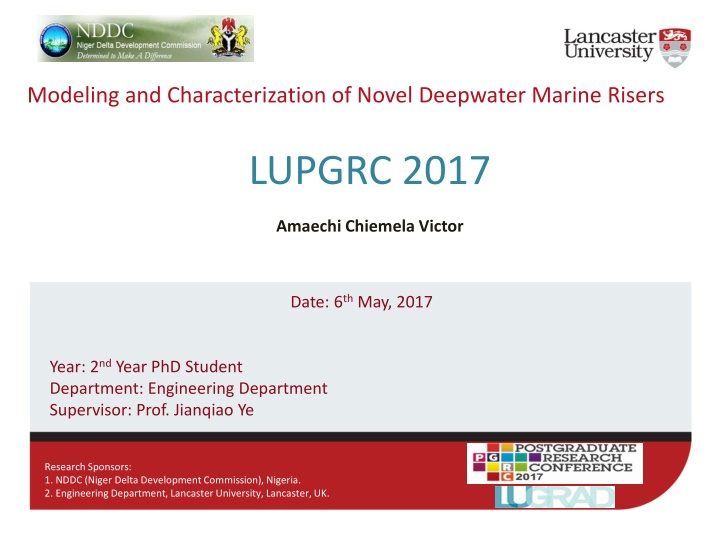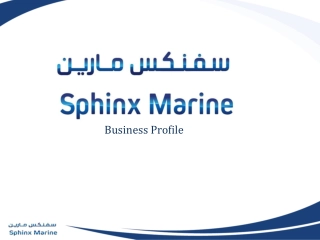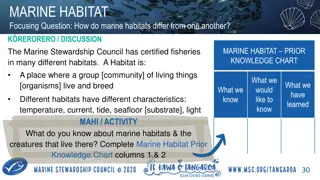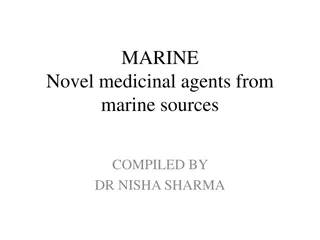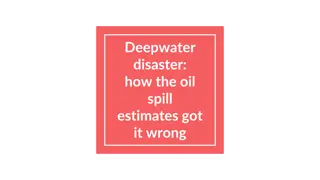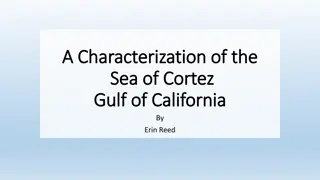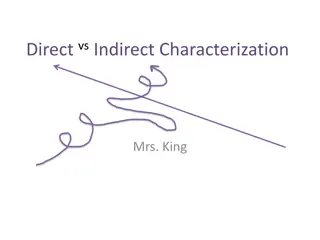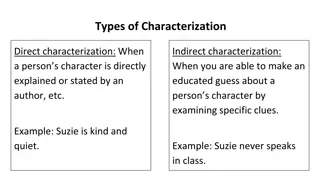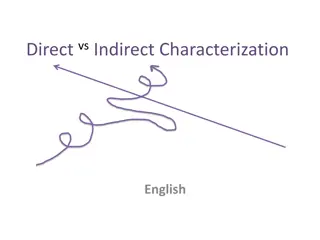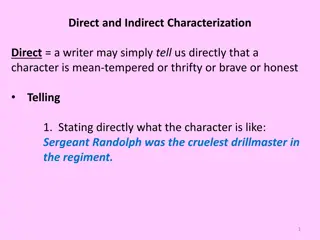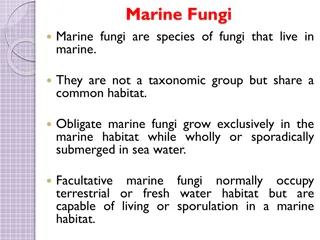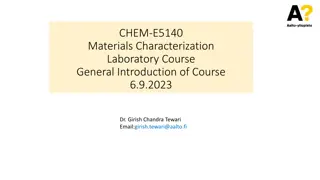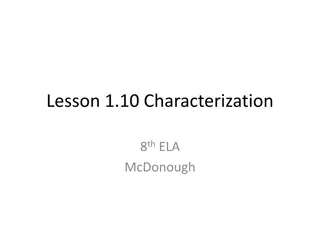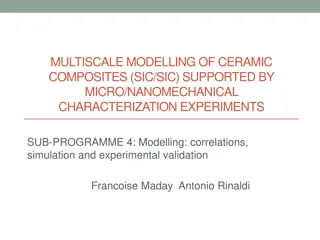Modeling and Characterization of Novel Deepwater Marine Risers
This research project focuses on the modeling and characterization of novel deepwater marine risers for offshore oil and gas applications. The study includes an overview of risers, current work update, various riser configurations, catenary equation analysis, loads on risers, and updates on Orcaflex modeling. The research is conducted by Amaechi Chiemela Victor, a second-year PhD student in the Engineering Department at Lancaster University, under the supervision of Prof. Jianqiao Ye, with sponsorship from NDDC and the Engineering Department, Lancaster University.
Download Presentation

Please find below an Image/Link to download the presentation.
The content on the website is provided AS IS for your information and personal use only. It may not be sold, licensed, or shared on other websites without obtaining consent from the author.If you encounter any issues during the download, it is possible that the publisher has removed the file from their server.
You are allowed to download the files provided on this website for personal or commercial use, subject to the condition that they are used lawfully. All files are the property of their respective owners.
The content on the website is provided AS IS for your information and personal use only. It may not be sold, licensed, or shared on other websites without obtaining consent from the author.
E N D
Presentation Transcript
Modeling and Characterization of Novel Deepwater Marine Risers LUPGRC 2017 Amaechi Chiemela Victor Date: 6th May, 2017 Year: 2nd Year PhD Student Department: Engineering Department Supervisor: Prof. Jianqiao Ye Research Sponsors: 1. NDDC (Niger Delta Development Commission), Nigeria. 2. Engineering Department, Lancaster University, Lancaster, UK.
Outline Outline Risers Overview Brief Discussion Current Work (Update) Riser Configurations Catenary Equation Loads on Risers Orcaflex Model Analysis / Discussion Works Done Next Steps Conclusion
Brief on Research The scope of the research work The research output and update The timelines to meet & any challenges The expected output on next steps Considerations on present research Present Results of research Understand the result interpretation. Oil and Gas Industry Onshore Mainstream Offshore Flexible Risers Mooring lines Risers Rigid Risers Hybrid Risers Pipelines, etc. Platforms Composite Risers
Current Work (Update) Following your advise, I have started working on Steel, using Steel Catenary Risers. Had to run some simulation on Orcaflex and try to interpret it. This also made me to also look at Pipe-laying operations, as they also have similar behaviour in installation from an offshore vessel. I have run an Orcaflex model of the riser on Orcaflex. Will develop it and incorporate the vessel motion generated from ANSYS Aqwa. Had to study more on Ocean conditions, as I was wrongly using the wrong wave spectrum for deepwater conditions. Currently am studying the analytical behaviour of the Catenary Risers. I have also extended the design from the Hydrodynamic model on Charles Hull, by modelling risers on it.
Riser Configurations Lazy Wave Free Hanging Catenary Tethered Lazy Wave / Reverse Pliant Wave Steep Wave Lazy-S Steep-S Pliant Wave
Catenary Equation ?? ? ? = ?/?[cosh 1] H ds Y H X Catenary Line
Loads on Risers Mean Water level Vessel Wave forces Top Connection Weight, (Wr) of Composite riser Current forces Internal and external fluid pressure Buoyancy Z Bottom connection Y Foundation casing X
Wire Frame Orcaflex Model Z OrcaFlex 9.8e: Catenary Riser J-lay.sim (modified 12:50 on 30/03/2017 by OrcaFlex 9.8e) Azimuth=270; Elevation=0 Time: 16.0000s 30 m X
Results OrcaFlex 9.8e: Catenary Riser J-lay.sim (modified 12:50 on 30/03/2017 by OrcaFlex 9.8e) CATENARY Riser End Force at End A vs Sea Z Acceleration at X=0.00, Y=0.00, Z=0.00 CATENARY Riser End Force (kN) at End A, t = -8.000 to 16.000s 200 150 100 50 0 -2 -1.5 -1 -0.5 0 0.5 Sea Z Acceleration (m/s^2) at X=0.00, Y=0.00, Z=0.00 m, t = -8.000 to 16.000s
Result presentation Full Results for CATENARY Riser at time 16.000s OrcaFlex 9.8e: Catenary Riser J- lay.sim (modified 12:50 on 30/03/2017 by OrcaFlex 9.8e) End A End B Total Force (kN) 70.3767908787898 Total Force (kN) 27.0148404990448 End Tension (kN) 70.3380480487908 End Tension (kN) 26.9885153675545 End Shear Force (kN) 2.33488566805939 End Shear Force (kN) 1.19232774190126 Total Moment (kN.m) 0 Total Moment (kN.m) 0 End Bend Moment (kN.m) 0 End Bend Moment (kN.m) 0 End Torque (kN.m) 0 End Torque (kN.m) 0 End Curvature (rad/m) 0 End Curvature (rad/m) 0 End Ez-angle (deg) 17.9584990101339 End Ez-angle (deg) 0.385102490526068 End Force Azimuth (deg) 360 End Force Azimuth (deg) 180 End Force Declination (deg) End Force Declination (deg) 87.0852676763911 174.988982552242 End Force Ez-angle (deg) 2.91473232360894 End Force Ez-angle (deg) 19.8597458115726 End Force Exy-angle (deg) 180 End Force Exy-angle (deg) 360
Components for Ends A and B End A components End Axes Global Axes Load Magnitude Ex Ey Ez GX GY GZ - - - - 70.376790878 23.908322449 66.191274440 Force (kN) 6.7507525031 1921E-16 6.1472226764 6.7507525031 1921E-16 70.107805184 7898 5571 4043 4048 3243 Moment (kN.m) 0 0 0 0 0 0 0 End B components End Axes Global Axes Load Magnitude Ex Ey Ez GX GY GZ - - - 27.014840499 26.979891814 26.979891814 1.3736975254 Force (kN) 1.3736975254 5.0955418479 0562E-15 5.0955418479 0562E-15 0448 0414 0414 5878 5878 Moment (kN.m) 0 0 0 0 0 0 0
Wireframe of the Model Z OrcaFlex 9.8e: pipeline laying 2.sim (modified 21:22 on 27/03/2017 by OrcaFlex 9.8e) Azimuth=270; Elevation=0 Time: 16.0000s 100 m X
Result of simulation OrcaFlex 9.8e: pipeline laying 2.sim (modified 21:22 on 27/03/2017 by OrcaFlex 9.8e) Time History: Vessel1 Supports Lx-Force -2920 -2930 Vessel1 Supports Lx-Force (kN) -2940 -2950 -2960 -2970 -5 0 5 10 15 Time (s)
To see effect of vessel lift OrcaFlex 9.8e: pipeline laying 2.sim (modified 21:22 on 27/03/2017 by OrcaFlex 9.8e) Time History: Vessel1 Max Support Lift Out for all supported lines Vessel1 Max Support Lift Out for all supported lines (m) 1.665 1.6648 1.6646 1.6644 1.6642 1.664 1.6638 1.6636 -5 0 5 10 15 Time (s)
Wireframe of Riser Model OrcaFlex 9.8e: RiserCase1X.sim (modified 18:08 on 13/03/2017 by OrcaFlex 9.8c) Azimuth=0; Elevation=0 Time: 16.0000s Z 1000 m Y
Result of Simulation End B End A Total Force (kN) 4628.77727116632 Total Force (kN) 3399.98021931812 End Tension (kN) 3399.93447412388 End Tension (kN) 4628.76577688492 End Shear Force (kN) 17.6369900628376 End Shear Force (kN) 10.3154643551501 Total Moment (kN.m) 0 Total Moment (kN.m) 0 End Bend Moment (kN.m) 0 End Bend Moment (kN.m) 0 End Torque (kN.m) 0 End Torque (kN.m) 0 End Curvature (rad/m) 0 End Curvature (rad/m) 0 End Ez-angle (deg) 167.426020680886 End Ez-angle (deg) 171.930329857442 End Force Azimuth (deg) 357.435550730998 End Force Azimuth (deg) 179.999999999747 End Force Declination (deg) 167.238877475392 End Force Declination (deg) 172.058016506824 End Force Ez-angle (deg) 167.238877475392 End Force Ez-angle (deg) 172.058016506824 End Force Exy-angle (deg) End Force Exy-angle (deg) 179.999999999747 357.435550730998
Components for Ends A and B End A components End Axes Global Axes Load Magnitude Ex Ey Ez GX GY GZ - - - - 3399.9802193 750.25852588 750.25852588 Force (kN) 33.602575076 3315.9988695 33.602575076 3315.9988695 1812 9106 9106 8122 7661 8122 7661 Moment (kN.m) 0 0 0 0 0 0 0 End B components End Axes Global Axes Load Magnitude Ex Ey Ez GX GY GZ - - - - 4628.7772711 2.8251942272 7764E-9 2.8251942272 7764E-9 Force (kN) 639.55956765 4584.3802836 639.55956765 4584.3802836 6632 1002 907 1002 907 Moment (kN.m) 0 0 0 0 0 0 0
Update on Simulations As regards the environmental load cases, I had to take a tutorial yesterday to understand more on the environmental loads. The stiffness on my riser for the ANSYS Aqwa which I am using for the hydrodynamic analysis is from that from Orcaflex. However, my initial design had very high stiffness with End Tensions as 3399.9 KN (End A) and 4628.77KN(End B). Currently, am trying to run more simulations using different load cases.
Next Steps The Hydrodynamic Model is still being developed; To do more simulations on the model; To approach the analysis and expand the model; To get good results on this work; To tidy up the review paper and send; Writing journal papers and more conferences Conclusion I understand the research work better now. Am more comfortable with the numerical modelling. I will keep on improving the models on the research, and running with different load cases.
